Tradescantia is one of the easiest houseplants to propagate and it’s a perfect candidate for water propagation. Water propagation is essentially nothing more complicated than cutting a bit off a plant and bunging it in a container of water, ideally a glass one so you can watch as it grow roots. It’s generally fast, easy and deeply satisfying to watch the new roots grow.
When you’re propagating a tradescantia in water, you need to use a cutting of an entire stem (unlike some plants which will grow new roots directly from a leaf stalk). Here’s a detailed step-by-step with photos, so you can see exactly what to do.
Plant choice:
I’m using a Tradescantia albiflora ‘Nanouk’ in these photos. It’s a great, fast growing tradescantia (I mean, they’re all fast growing!) with variegated leaves in a sugary pink and green. But this type of propagation will work for all tradescantias, including my other favourite Tradescantia zebrina.
If you’ve got more than one plant, choose a healthy one, that’s free of pests and diseases, and with lots of fresh growth.
Time of year:
The best time of year to propagate houseplants is generally the Spring, when the plants have higher levels of auxins, the plant hormones that help to promote new growth. That said, tradescantia are really good at growing roots, and I have managed to get new roots from mine even in the depths of winter. Just expect it to take a little longer…
Make the cut:
You need a short section of stem to propagate; I usually find cutting a section about four leaves long is the perfect size. Cut the stem off just above a leaf, which means that what is left on the plant won’t die back (if you cut it higher above a leaf, the leftover bit of stem will eventually die back to the leaf, which can look a bit unattractive and make the plant more prone to getting a disease.)
Use something sharp and effective to cut with: I find floral snips are the best thing for these soft stems, but secateurs or just sharp kitchen scissors would do a good job too.
You can cut more than one stem off the plant at a time, depending on how big your parent plant is. Try not to cut more than a third off at one go, as that could cause too much shock to the plant.
Where you’ve cut on the parent plant will usually encourage it to branch out and grow more stems, so you’ll ultimately have a bigger plant afterwards, as well as some new baby plants!
Strip the stem:
Strip off any leaves along the bottom section of stem, so that whatever is sitting in the water is free of leaves. Where I’ve cut this one, this means removing the bottom two leaves and leaving the two at the top. To strip them off, just tear away gently with your hands. Any leaves left below the water line can start to rot and cause the cutting to decay too, or fill the water with algae, so you want to make sure the stem area is clear.
Put into water:
Place the stem in water. I like to use test tube shaped glass bottles, as the lip holds the leaf out of the water, while keeping the stem submerged.
You can get special propagation kits (like mine here!) but equally, any container that holds water will work fine. Just make sure that the bottom of the stem, where the roots will grow from, is always below water, and the leaves at the top are always above the water.
Ongoing care:
Put your propagation unit somewhere with bright, indirect light and check up on it every few days.
I always use this window in my kitchen for all my propagating. It looks very bright in this photo, but it is an East facing window, so it only gets early morning sun, which is quite gentle. A South or West facing window with direct rays of bright sunshine would probably scorch the leaves, but a North or East facing window would be ideal. Top up the water as it reduces, and completely refill it once a week, to prevent algae growing. To avoid tipping out what is in there and damaging any developing roots, just hold it under a tap and keep the water pouring into it for a while as the old water comes out of the top.
Keep an eye on the cutting and you should see it start to develop roots within three weeks or so, depending on the time of year and conditions.
It will get thin, spidery roots first of all (see the pic below), but they should bulk up after a while into a solid network of roots.
Potting on:
Once the roots have a good network, you can pot the cutting up into compost and leave it to grow. With tradescantia, it’s a good idea to put a few different cuttings in a pot to make a bushy plant. I would usually go for anything between three and six, depending on the size of the pot.
Use a peat-free houseplant compost, fill a pot to just below the rim and water first. Then carefully remove your cuttings from the glass, taking care to damage the roots as little as possible. Make a few holes around the edge of the compost and gently tuck the cuttings in, with the roots facing downwards so they can continue to grow.
Transferring water propagated plants into compost is a slightly tricky step, sometimes, as the roots that have grown in water are a little different to roots that grow in soil. It’s important to keep the cutting still in optimum conditions at this point, with good bright, indirect light and the soil kept evenly moist, while it settles in to its new environment.
Hopefully, within a few weeks you’ll start to see the plant shooting up and you’ll have a brand new plant in no time at all!
More info:
Tradescantia are also super easy to propagate in compost as well. You can use the same method as above to prepare your cutting, but instead of putting it into water, pop about four lengths of stem around the edges of a pot filled with compost. Keep the compost evenly moist, and they will grow just as quickly (plus, you don’t need to worry about transferring them over) but I find it slightly less enjoyable this way as you can’t watch the roots grow, so you just need to hope all is going well under the soil!

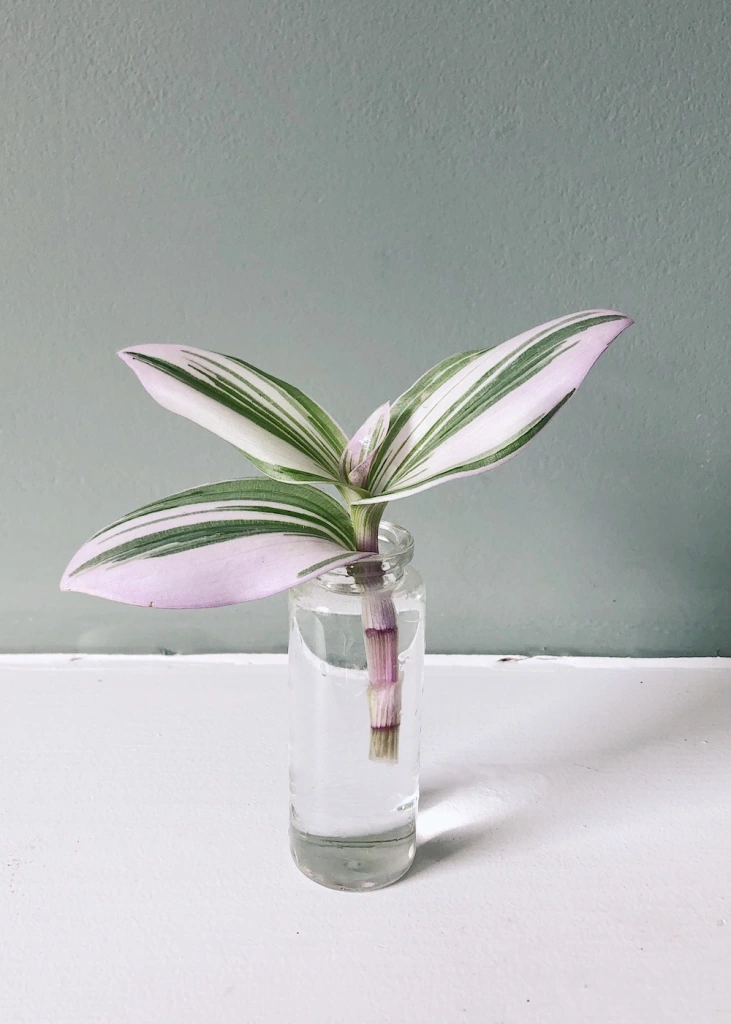
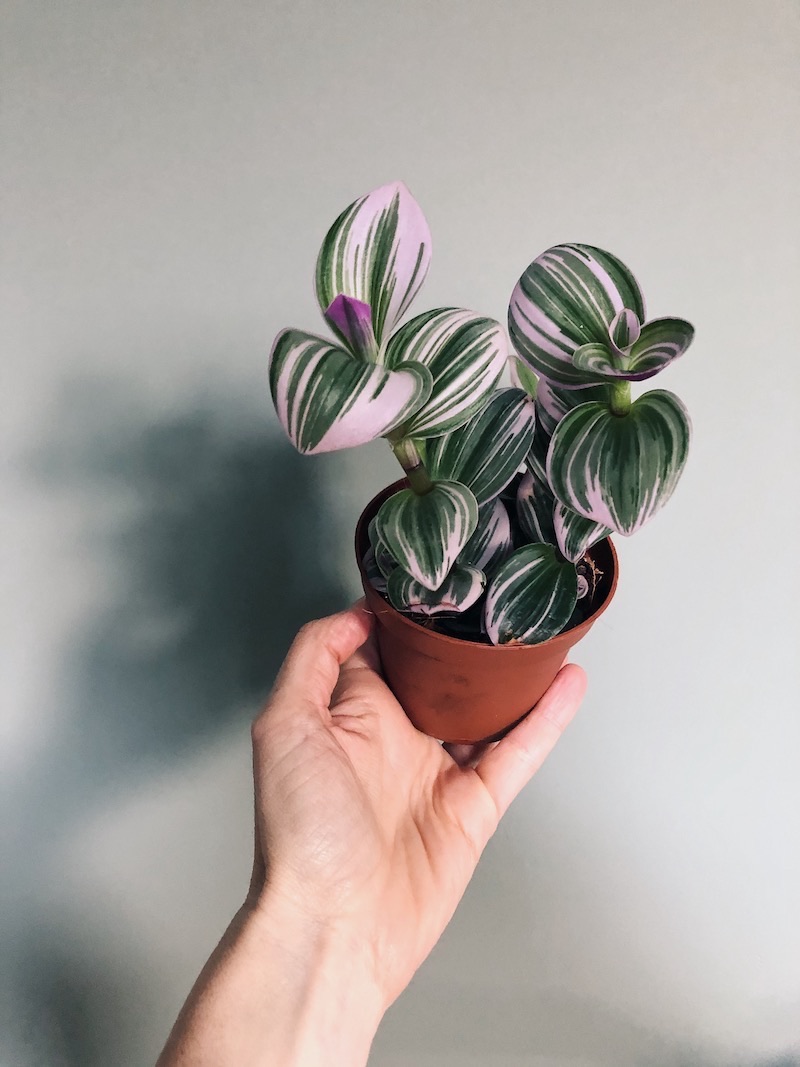
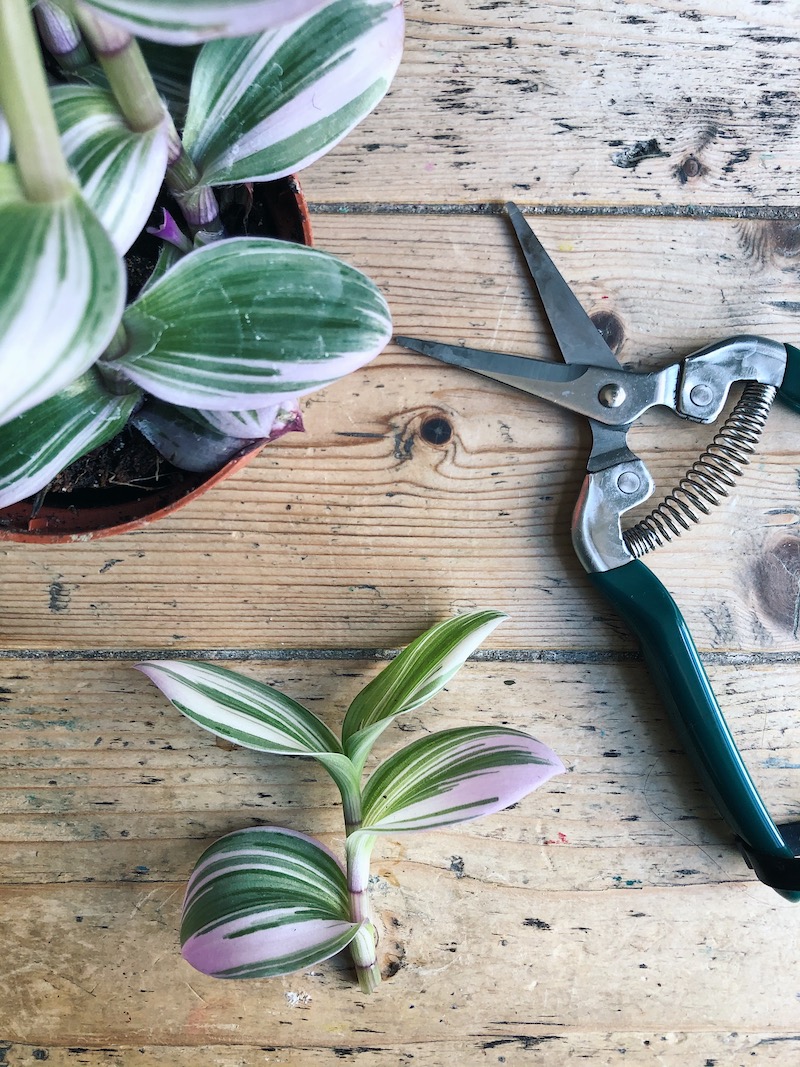
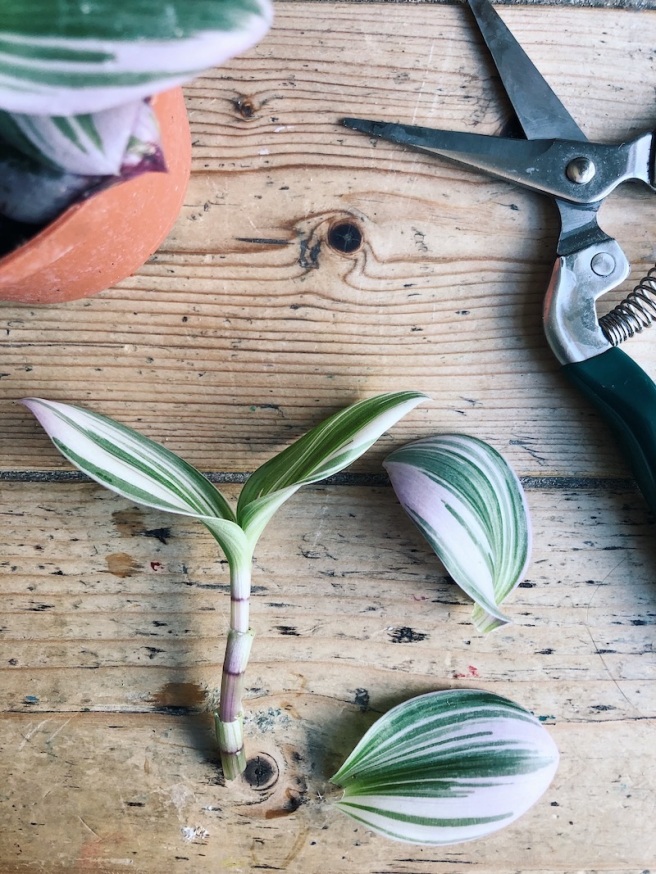
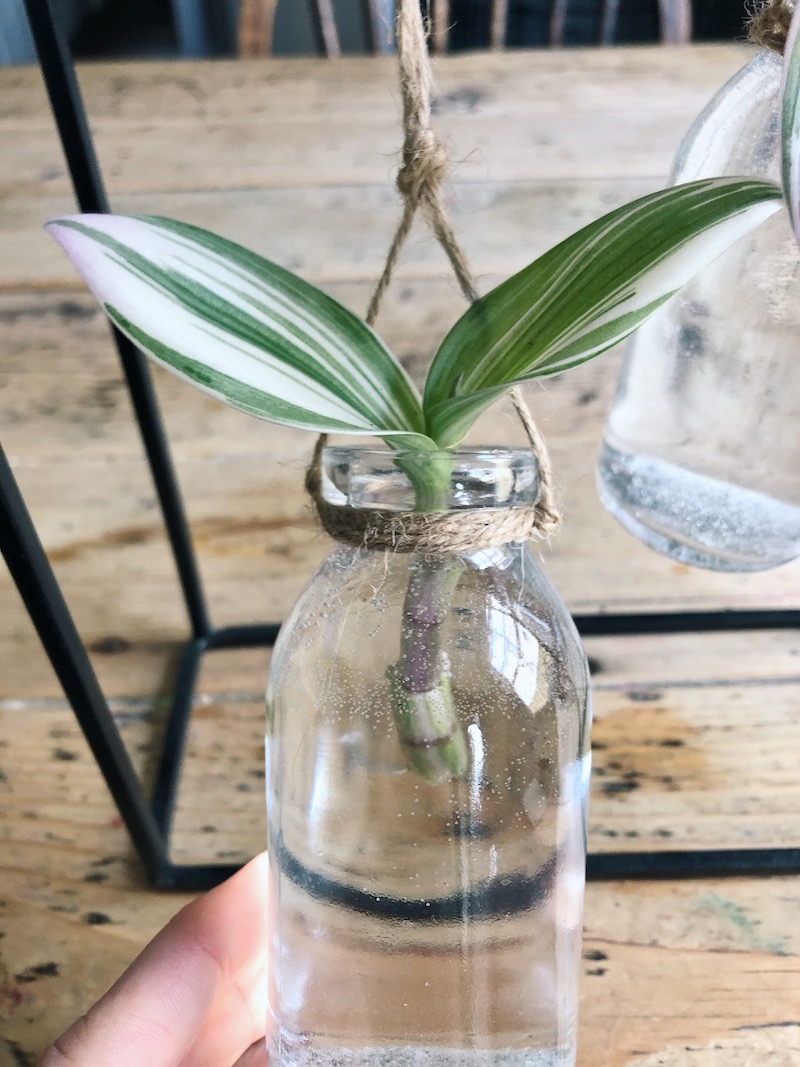
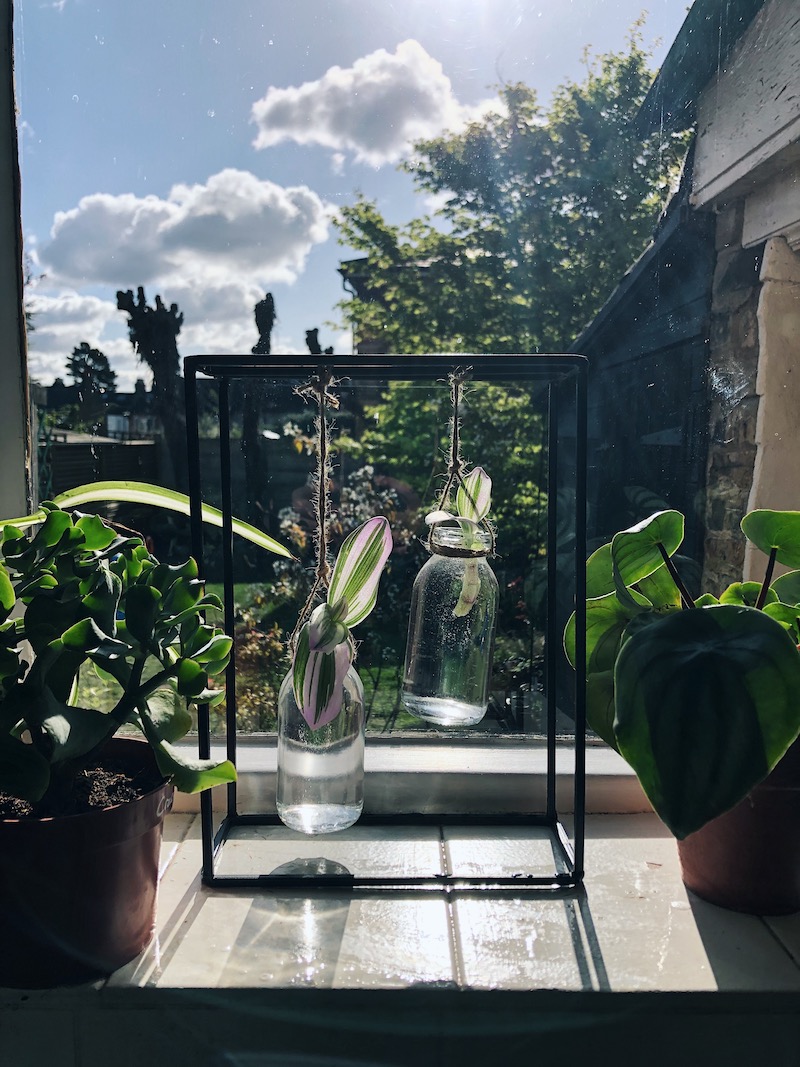
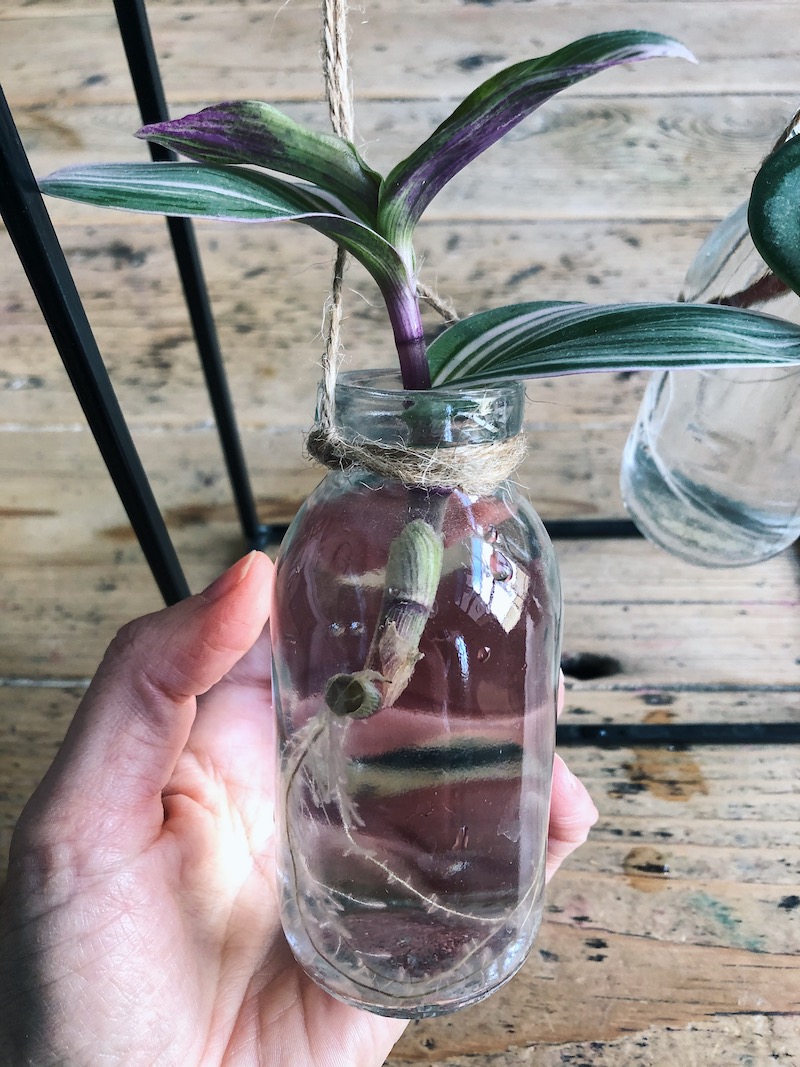
Tradescantias are one of my favourite house plants 🙂
I had a piece of my nanouk break off sadly and it’s not a whole stem but somewhat of a short stem and am hoping it will still propagate. Have you had luck with shorter stems propagating in water?